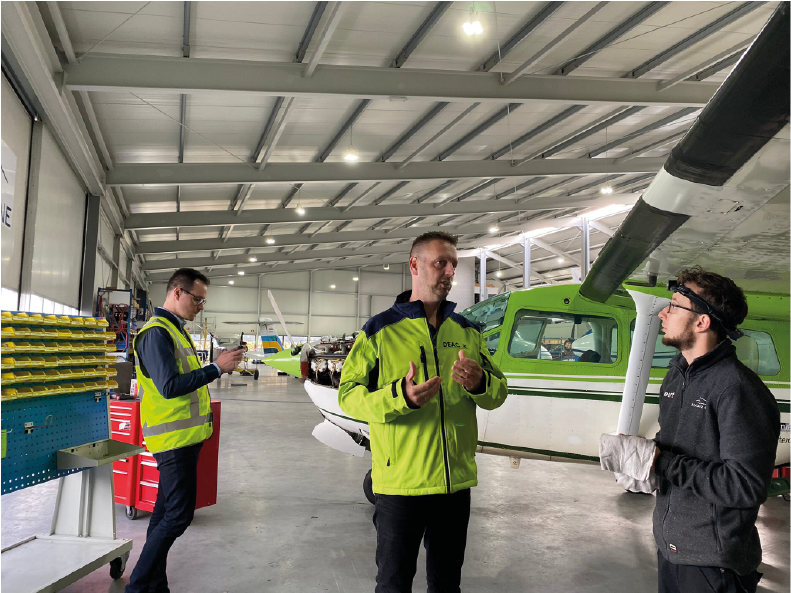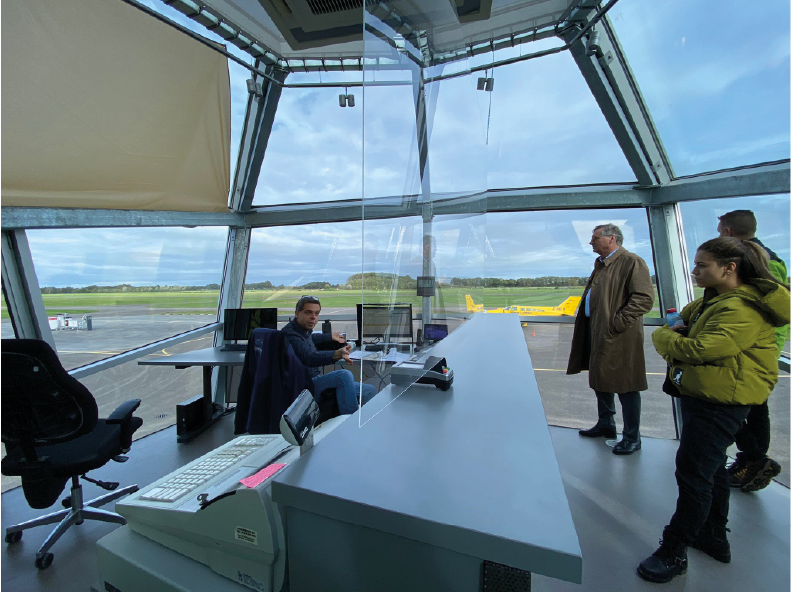flyelectrical.how
flyelectrical.how is a knowledge-based platform specially designed for aviation professionals where they can get and share information about the emerging topic "electric aircraft".
Client
AUAS Aviation Management Unit
Dutch Electrical Aviation Centre
Project Type
UI/UX, Interaction & Product Design
Role
User Research, Strategy, UI & UX Design, Visual Design, Concepting
Team
Alan Ayoubi, Elif Kuvanlık, Tudor Cora, Xabyne van Veen
Year and Duration
2021 - 1 month
Overview
A knowledge-based platform for aviation professionals
Electronic airplanes are a relatively new concept in aviation, and most airports have yet to figure out how to operate them.
Most airport staff lack the information, resources, and knowledge-sharing tools required to handle an electrical aircraft in both routine and emergency scenarios, resulting in electrical airplanes being unable to land, park, charge, and take off safely from airports.
Problem
Due to the new emergence of the electric aircraft issue, there are not enough resources for airport employees and professionals to obtain information on the subject. There is no environment to exchange information between employees who know more about the subject and those who need to learn the subject from scratch. This causes both a slowdown in the distribution of information and a problem on how to regulate electric planes landing at the airport.
Solution
On flyelectrical.how, there is a community section for airport and aircraft employees to exchange information and ask questions, a training section with written resources, lessons, and video lectures to support learning, a secured platform that will control the shared information, for the admin who will deal with member admissions. There is a separate panel. In this way, learning can take place in more than one way.
Challenges
01 What can we do to centralize information about electrical aircraft?
02 How can the required content be offered, secured, and updated?
03 How can we create a space where people can share their knowledge and experience?
Process
Research
Understanding the context
Due to the newness of the topic "electric aviation", it was extremely important for us to rely on real-life examples. That is why we started by putting ourselves in the context of where the product would be needed and went to Teuge Airport, where the Dutch Electric Aviation Center (DEAC) is located, and conducted interviews.
During an interview with an employee, we learned that they use a variety of devices that are clearly assigned multiple responsibilities. We questioned whether it would be safe to assign our solution to a device they already use to manage their business.
Through desk research and client interviews, we learned that there are many topics in electric aviation that we need to cover: aircraft types, safety, charging facilities, maintenance and regulations. We also learned that there is not much easily accessible information on the subject.
This helped us narrow our focus on a solution that centers on gaining and sharing knowledge.
Design
Considerations
A new challenge has emerged: How can necessary content be delivered, secured and updated? We can either focus on step-by-step learning or organize all the content into categories so that the user can learn flexibly. As a result of our interviews and research, we decided that this type of learning need not be linear, so we focused on a flexible learning approach.
We decided that a digital platform that uses log-in requirements to make the product updatable and secure at the same time would be most appropriate.
We first designed a prototype for the iPad, as aviation workers wanted flexibility where they wanted access to this product and used the iPad in the field.
Centralization
Due to constant changes in information about electric aviation, we prioritized a solution that can be updated. The Dutch Electric Aviation Center network is also exploring the industry further based on the findings of the study.
In order to improve the learning curve of aviation professionals and workers, we needed a two-part digital platform: verified data and a community that would center current discussion.
All of these final decisions were made after doing "how might we and user journey mapping" methods.
Back-end & Security
We require back-end and management because our solution is knowledge-based. User information should be verified by the admin and edited if it needs to be changed. A growing knowledge base in the aviation industry led us to find new ways to adapt.
We created a feature that enables employees to add keywords to their questions and the information they share in the community. An admin can identify the most frequently discussed topics and areas where information is lacking by viewing these keywords in the admin interface.
Additionally, admins can edit and update content (both in the learning section and in the community) to avoid misleading information. Checking the content is mandatory in the community section as people ask and answer questions there. The only other request DEAC made was that the platform not be freely available to everyone. We have designed a system for admins to approve/reject new users who wish to register on the platform. Furthermore, this increases the safety of the platform.
An additional way of learning
It has been noted previously that aviation personnel is familiar with taking observations visually in the field. They can become familiar with operating electric aircraft by using a physical method at airports. The arrival of an electric aircraft can be managed by employees with the help of a short step-by-step guide.
So we built a miniature of Teuge Airport and added a few voice touch points to connect with its specific environment. Employees are briefly guided through each stage of the process through these touch points. Since each airport looks different, this product should have a miniature of each.
This project was developed in collaboration with Dutch Electric Aviation Center (DEAC) as part of the Amsterdam University of Applied Sciences' Master Digital Design.













